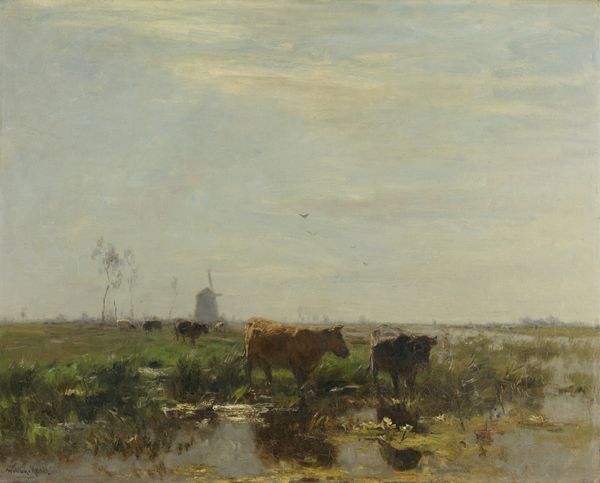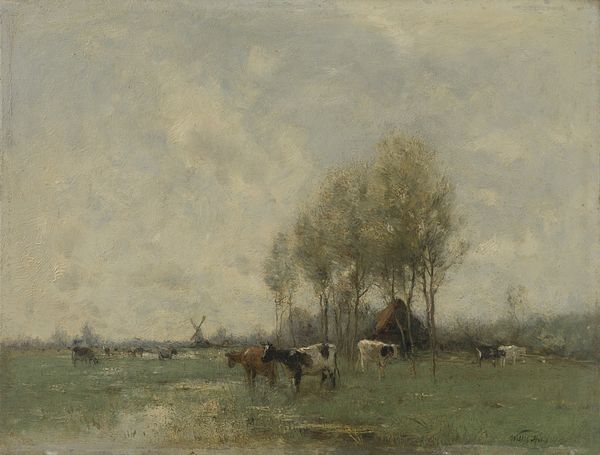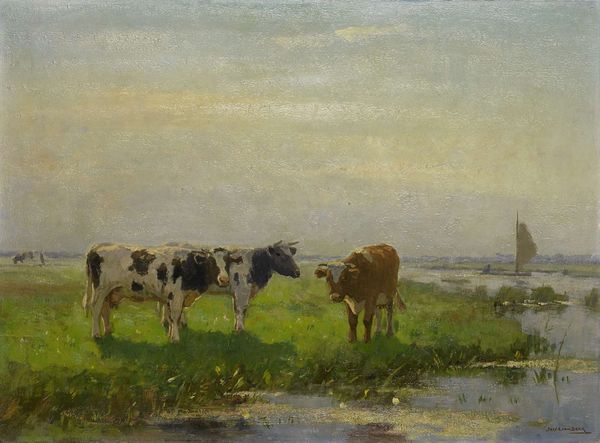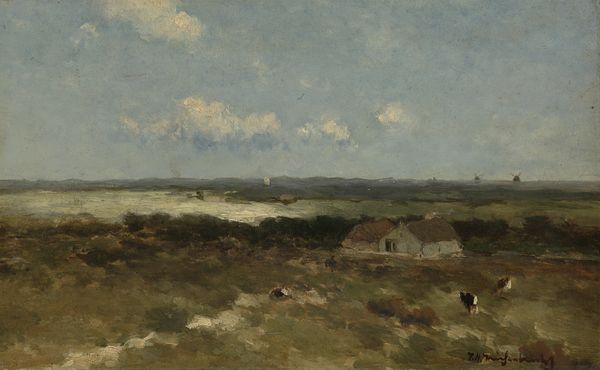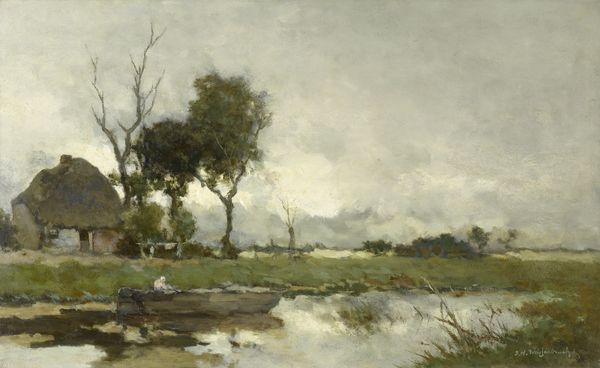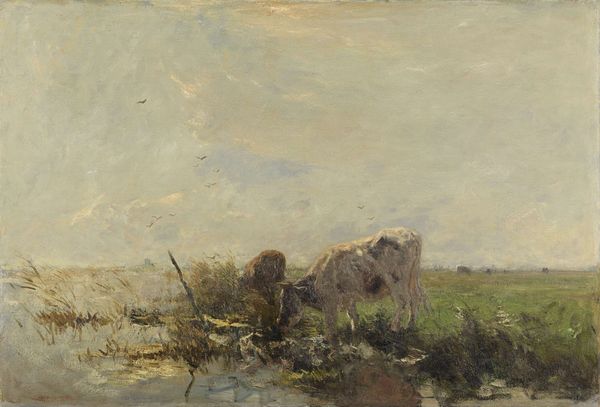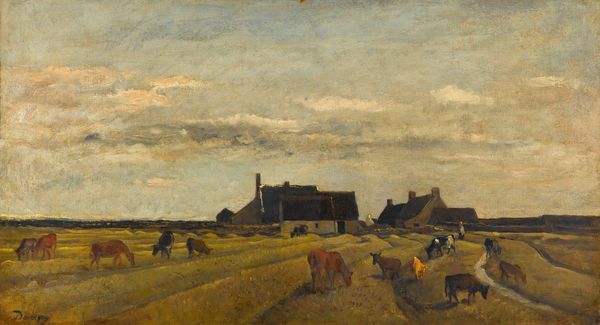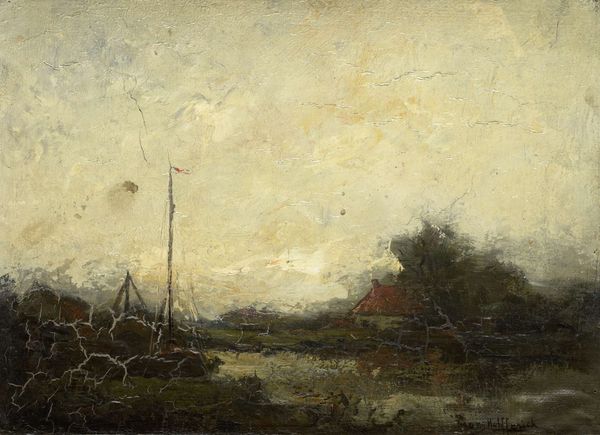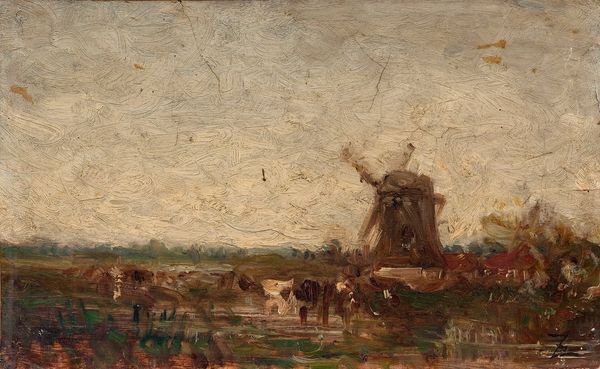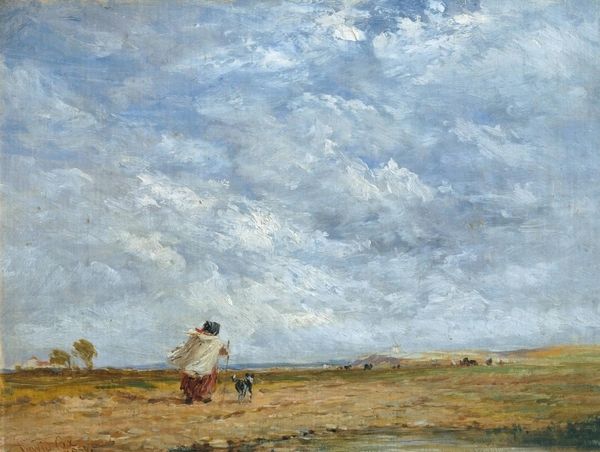
painting, plein-air, oil-paint, oil-on-canvas
#
painting
#
impressionism
#
plein-air
#
oil-paint
#
landscape
#
impressionist landscape
#
oil painting
#
genre-painting
#
post-impressionism
#
oil-on-canvas
#
watercolor
#
realism
Dimensions: 18 1/4 x 22 3/8 in. (46.36 x 56.83 cm) (outer frame)15 5/8 x 19 5/8 in. (39.69 x 49.85 cm) (canvas)
Copyright: Public Domain
Curator: So, we have before us "Cattle Grazing at the Water's Edge," an oil on canvas created around 1880-1890 by Willem Maris. There's something incredibly serene about this piece, almost idyllic, isn’t it? Editor: It really is! I immediately get a sense of quiet, like a still moment in time. The soft colors and hazy atmosphere are so calming. What do you see in this piece? Curator: I see more than just a pretty landscape. It is essential to acknowledge that seemingly simple rural scenes are laden with cultural meaning. The artwork was created during a period of immense social and economic upheaval in Europe. Considering its idyllic setting, how might this artwork be seen as a reaction against the rapidly changing industrialized world? Editor: Hmm, it's almost like a nostalgic look back to simpler times, away from the factories and cities. Maybe even a romanticized view? Curator: Exactly! And what about the position of the cows? Are they simply cows, or can they represent something more within that socio-political context? Perhaps an assertion of traditional agricultural practices? Or even an idealised relationship with nature threatened by urban sprawl? Editor: That’s a perspective I hadn't considered. I was focusing on the technique and aesthetic. Thinking about it as a statement, a form of resistance, is eye-opening. Curator: Art doesn't exist in a vacuum. By analyzing these artworks, can help reveal unspoken anxieties and desires of their time. It also challenges us to be more critically conscious about contemporary representations of landscapes today. What about its gender context? How can gender and the gaze of the woman as subject apply here? Editor: This reminds me to delve deeper, beyond just the surface beauty. Thanks so much! Curator: It was my pleasure, remember, art history should foster deeper intersectional inquiries.
Comments
minneapolisinstituteofart almost 2 years ago
⋮
The Dutch used windmills to pump salty water out of intricately designed irrigation systems, over dykes, and into the sea. They reclaimed land from marshes in order to graze cattle on their cheese and dairy farms.
Join the conversation
Join millions of artists and users on Artera today and experience the ultimate creative platform.
